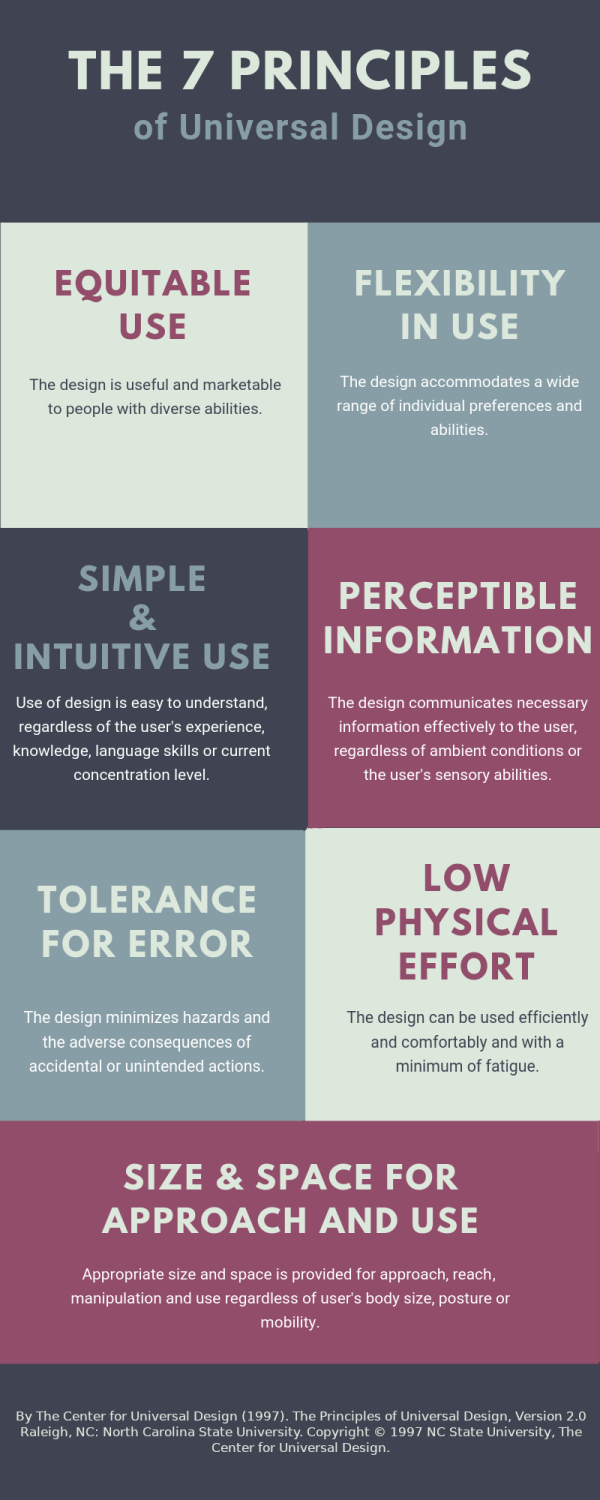

We need to be mindful of not just designing or building for our own immediate needs.

While this is true, the aim of the posters is to raise awareness of various conditions through good design practice. So, aren’t good design principles applicable to everyone and not just those with access needs? The dos, that run across various posters, include using things like good colour contrasts, legible font sizes and linear layouts. Posters showing the dos and don'ts of designing for users with accessibility needs including autism, blindness, low vision, D/deaf or hard of hearing, mobility and dyslexia Currently, there are six different posters in the series that cater to users from these areas: low vision, D/deaf and hard of hearing, dyslexia, motor disabilities, users on the autistic spectrum and users of screen readers. The dos and don’ts of designing for accessibility are general guidelines, best design practices for making services accessible in government. Together with the team, she’s created these dos and don’ts posters as a way of approaching accessibility from a design perspective. Karwai is part of an accessibility group at Home Office Digital, leading on autism.

Provide adequate space for the use of assistive devices or personal assistance.Karwai Pun is an interaction designer currently working on Service Optimisation to make existing and new services better for our users. Accommodate variations in hand and grip size. Make reach to all components comfortable for any seated or standing user. Provide a clear line of sight to important elements for any seated or standing user. Principle 7: Size and Space for Approach and UseĪppropriate size and space is provided for approach, reach, manipulation, and use regardless of user's body size, posture, or mobility. Allow user to maintain a neutral body position. The design can be used efficiently and comfortably and with a minimum of fatigue. Discourage unconscious action in tasks that require vigilance. Arrange elements to minimize hazards and errors: most used elements, most accessible hazardous elements eliminated, isolated, or shielded. The design minimizes hazards and the adverse consequences of accidental or unintended actions. Provide compatibility with a variety of techniques or devices used by people with sensory limitations. Differentiate elements in ways that can be described (i.e., make it easy to give instructions or directions). Maximize "legibility" of essential information. Provide adequate contrast between essential information and its surroundings. Use different modes (pictorial, verbal, tactile) for redundant presentation of essential information. The design communicates necessary information effectively to the user, regardless of ambient conditions or the user's sensory abilities. Provide effective prompting and feedback during and after task completion. Arrange information consistent with its importance. Accommodate a wide range of literacy and language skills. Be consistent with user expectations and intuition. Use of the design is easy to understand, regardless of the user's experience, knowledge, language skills, or current concentration level. Facilitate the user's accuracy and precision. Accommodate right- or left-handed access and use. The design accommodates a wide range of individual preferences and abilities. Provisions for privacy, security, and safety should be equally available to all users. Avoid segregating or stigmatizing any users. Provide the same means of use for all users: identical whenever possible equivalent when not. The design is useful and marketable to people with diverse abilities. Principle 7: Size and Space for Approach and Use.According to the Center for Universal Design in NCSU, the Principles "may be applied to evaluate existing designs, guide the design process and educate both designers and consumers about the characteristics of more usable products and environments." The 7 Principles of Universal Design were developed in 1997 by a working group of architects, product designers, engineers and environmental design researchers, led by the late Ronald Mace in the North Carolina State University.The purpose of the Principles is to guide the design of environments, products and communications.


 0 kommentar(er)
0 kommentar(er)
